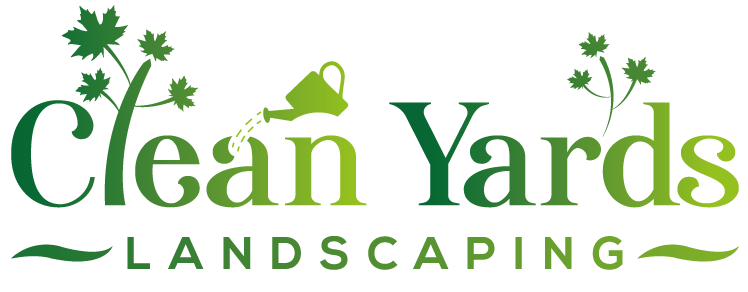Embrun: Control Plant Size This Spring, Prevent Chaos
Quick Guide to Spring Plant Size Control:
- Prune early spring bloomers (lilac, forsythia) *after* flowering.
- Prune summer/fall bloomers (potentilla, panicle hydrangea) in *late winter/early spring*.
- Use thinning cuts to improve air circulation and maintain natural shape.
- Choose plants with a mature size appropriate for your space.
- Divide overcrowded perennials (hostas, daylilies) every few years.
- Use sharp, clean tools for healthy cuts.
Is your garden already showing signs of a spring takeover? Get a free quote for professional help!
Request Your Quote TodayIntroduction: Spring Growth in Embrun – Excitement or Impending Chaos?
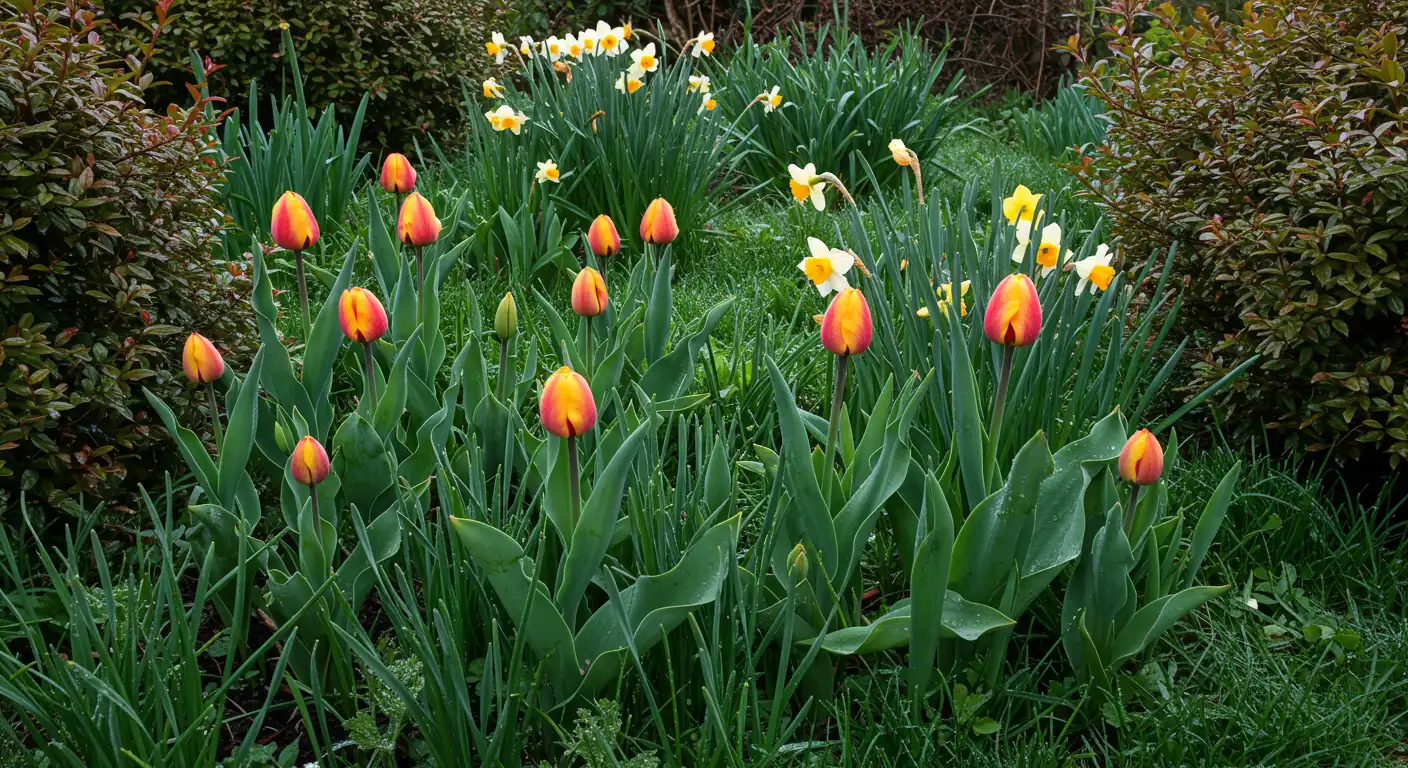
Ah, spring in Embrun! Can you feel it in the air? After what feels like an eternity of Ottawa winter hibernation, seeing those first determined green shoots pushing through the damp soil is pure relief. The snow finally gives up, the local rivers start flowing freely again, and the birds are back, filling the air with their cheerful songs. It’s that glorious time when yards across Embrun, and nearby spots like Russell or even Greely, begin to shake off the winter chill. You step outside, breathe in that unique smell of thawing earth and possibility, maybe even spot your first brave tulip, and feel that buzz of excitement for the gardening season ahead.
But hold on… wasn't that little spruce tree much smaller last fall? Did your favourite flowering shrub secretly attend a body-building competition over the winter? Suddenly, that initial spring joy gets mixed with a tiny dose of panic. That wonderful, vibrant surge of life we craved can feel like it's staging a friendly, yet slightly overwhelming, takeover of your landscape design. Your carefully planned garden beds might start looking suspiciously like a jungle, and peaceful weekend lawn care daydreams shift to imagining epic battles with runaway vines and perennials gone wild. Is this springtime bliss, or is Mother Nature hinting at impending chaos?
Don't fret! You're definitely not alone in feeling this way. Taming the spring explosion is a yearly ritual for homeowners everywhere, from Barrhaven to right here in Embrun. The fantastic news is that you can guide that growth, keeping your yard beautiful, healthy, and manageable without needing a machete. A little know-how goes a long way! This guide is your friendly companion for navigating the surge. We'll dig into practical, actionable advice on strategic pruning (when and how!), timing your trimming for maximum effect (and minimal plant shock!), understanding when to divide those over-enthusiastic perennials, and promoting healthy growth that enhances your space, rather than engulfing it. Let's get ready to transform that potential chaos back into pure, unadulterated spring excitement!
Why Size Matters: The Unseen Consequences of Overgrown Gardens
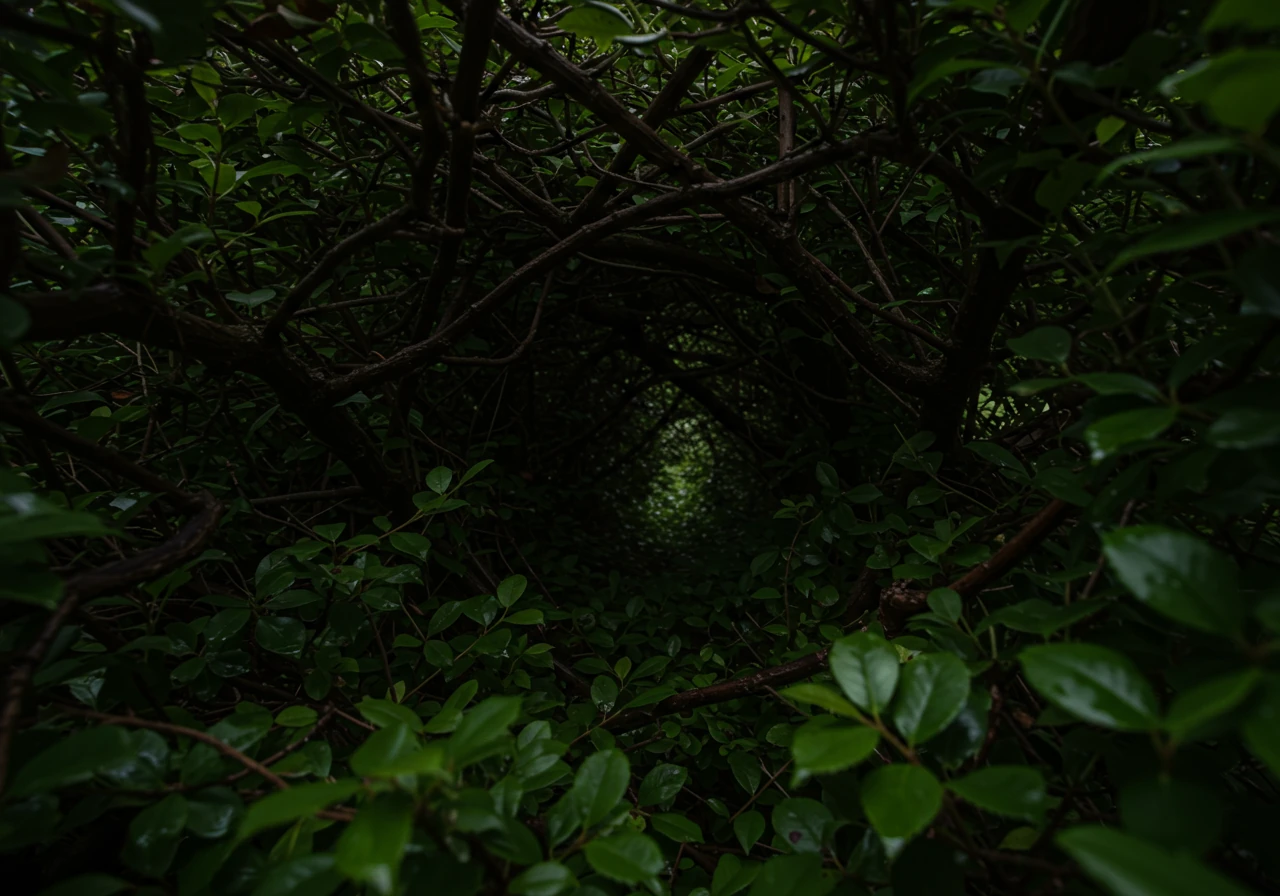
Okay, let's talk turkey – or maybe, let's talk Triffids! While we all love seeing our gardens thrive, there's a definite point where "lush and abundant" crosses the line into "slightly menacing jungle." It might seem harmless, maybe even charmingly rustic, to let things get a little wild, but overgrown gardens have some sneaky downsides that go beyond just looking untidy. Letting plants get too big for their boots (or roots!) can cause real headaches.
First off, think about plant health. When shrubs and perennials are crammed together like commuters on an Ottawa rush hour bus, air can't circulate properly. This creates a damp, stagnant environment – basically, a five-star resort for fungal diseases like powdery mildew and black spot. Pests love these crowded, shady conditions too! Keeping plants trimmed allows for better airflow, which is nature's way of helping keep diseases at bay. It also makes it easier to spot and deal with any creepy crawlies before they stage a hostile takeover. You wouldn't want all your hard work preparing your veggie garden in tough clay soil to be ruined by pests hiding in overgrown neighbouring bushes!
Then there's safety. That charmingly overgrown shrubbery right by your driveway in, say, Barrhaven or Nepean? It might look lovely, but it can seriously block your view of oncoming traffic or pedestrians. Overzealous groundcovers can creep over pathways, creating sneaky trip hazards. And hefty tree branches leaning against your house? That's not rustic charm; it's potential damage waiting to happen during the next big Ottawa windstorm. Regular trimming keeps sightlines clear and walkways safe.
Don't forget resource competition. Big, leafy bullies hog sunlight, water, and nutrients, often leaving their smaller neighbours starving and stunted. This can lead to patchy lawns needing extra help, perhaps even overseeding to encourage thicker grass in the shaded-out areas. Ensuring plants are appropriately sized means everyone gets a fair share of the resources, contributing to a healthier overall yard ecosystem. Remember, even if you focus on improving soil health through lawn aeration, overly dominant plants can still monopolize the benefits.
Finally, letting plants get out of hand completely wrecks your original landscape design intent. That carefully planned balance of shapes, textures, and colours? Poof! Gone under a sea of green. The dwarf evergreen you planted specifically because it was small suddenly decides it wants to be king of the garden bed, obscuring everything behind it. Pruning and managing size helps maintain the look and feel you were aiming for. A smart, eco-friendly approach is choosing plants suited for the available space right from the start. Planning, much like keeping a garden log to plan for fall planting success, helps prevent future size wars.
If your garden is already looking like it might eat the postman, don't despair! Getting things back under control is possible. Sometimes, a professional touch is needed. For significant overgrowth issues, considering expert yard cleanup services in Embrun can give you a fresh start. Managing plant size is just one crucial part of the comprehensive landscaping and property maintenance services that keep your outdoor space looking its best. So, keep those secateurs handy – a little trim goes a long way!
Need help reclaiming your yard from overgrowth?
Get Professional Help With Your Yard CleanupTiming is Key: Your Ottawa Valley Spring Pruning Calendar
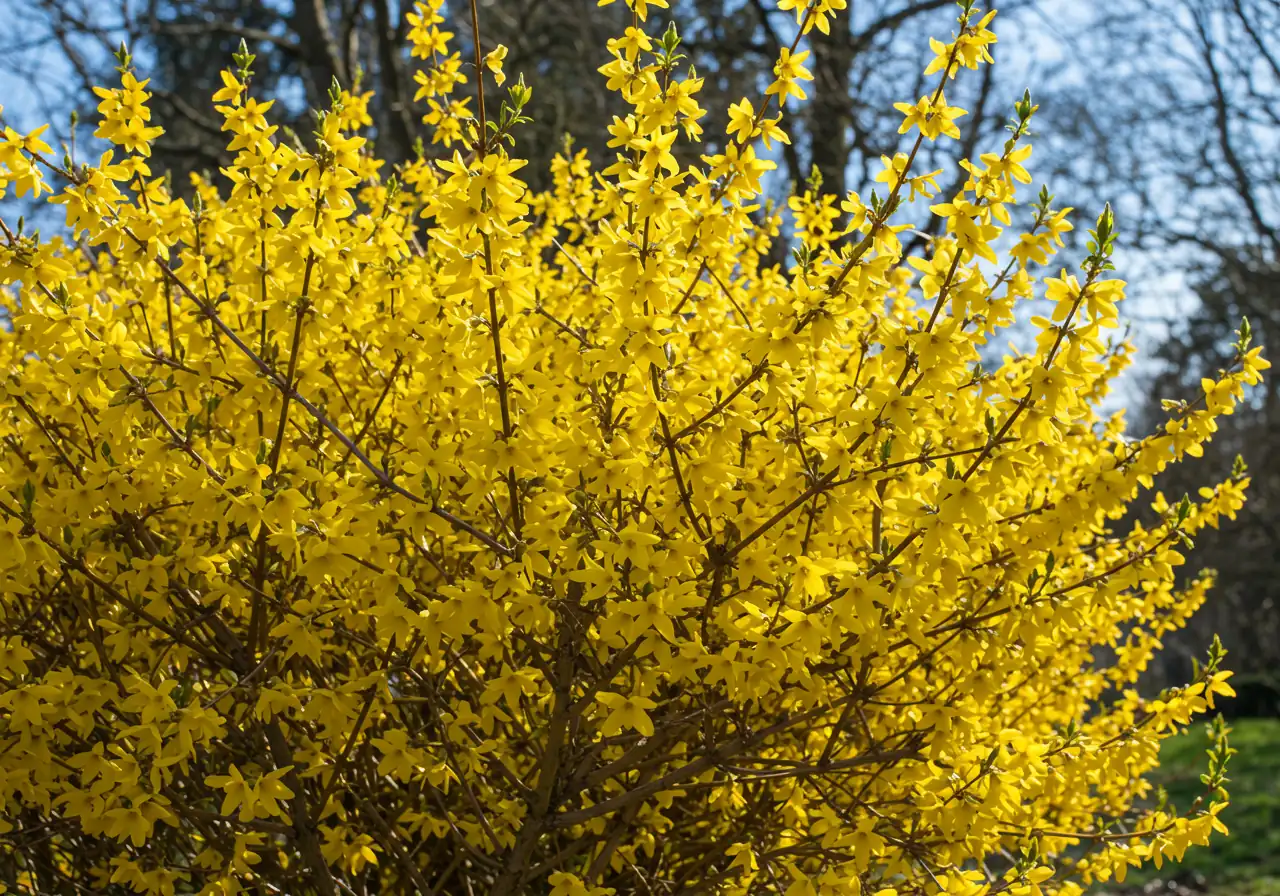
Alright garden warriors of the Ottawa Valley, let's talk pruning! Spring arrives, the snow melts (finally!), and it's tempting to grab those shears and start snipping away like Edward Scissorhands at everything that looks slightly out of place. But hold your horses, or rather, your pruners! When it comes to spring pruning, timing isn't just important – it's everything. Get it wrong, and you might accidentally snip off this year's flower show before it even begins. Get it right, and you'll encourage healthy growth and abundant blooms. Think of it like waiting for the Rideau Canal Skateway (check its status here) to officially open – you can't rush Mother Nature!
The golden rule boils down to when your shrub sets its flower buds. Plants aren't all on the same schedule (unlike Ottawans rushing for the first patio spot!). Some are early birds, setting buds on last year's branches (old wood), while others are more laid-back, producing flowers on the new growth they put out this spring (new wood).
Shrubs Blooming on Old Wood: These are typically your early spring bloomers – think Forsythia, Lilac, Weigela, and some types of Hydrangeas (like the bigleaf ones, which can be tricky in our Ottawa climate zone). If you prune these guys before they bloom in spring, you're literally cutting off the flower buds they painstakingly formed last year. Ouch! The best time to prune them is right after they finish flowering. This gives them the whole growing season to produce the wood that will carry next year's blooms.
Shrubs Blooming on New Wood: These shrubs tend to flower later, from summer into fall. Examples common in gardens from Nepean to Metcalfe include Panicle Hydrangeas ('Limelight', 'Pinky Winky'), Potentilla, and summer-blooming Spireas. Since they flower on the growth they produce this year, pruning them in late winter or early spring (think March or early April in the Ottawa area, before major leaf-out) is ideal. This encourages vigorous new growth, which means more flowers! Cutting back old stems also helps maintain a good shape.
What About Other Plants?
- Trees: Major structural pruning is best left for dormancy (late fall/winter). In spring, focus on removing any dead, damaged, or diseased branches you spot. For large trees, consider consulting a certified arborist.
- Roses: Most shrub and hybrid tea roses benefit from pruning in early spring as the buds begin to swell. Cut back dead canes and shape the plant.
- Perennials: That messy leftover foliage from last year? Cut it back in early spring before the new growth gets too tall. This is a standard part of any spring Marionville garden clean up service and really helps tidy things up. Getting rid of all that debris is crucial after pruning; proper disposal might be part of a larger Marionville yard cleanup service.
Quick Ottawa Valley Pruning Guide (Late Winter/Spring):
Here's a simple cheat sheet for common plants you might find in areas like Richmond or Winchester:
| Plant Type | When to Prune | Blooms On | Notes |
|---|---|---|---|
| Lilac | After flowering (Late Spring/Early Summer) | Old Wood | Remove spent flowers, thin oldest stems. |
| Panicle Hydrangea ('Limelight', etc.) | Late winter/early spring | New Wood | Cut back by 1/3 to 1/2 for strong stems. |
| Forsythia | After flowering (Spring) | Old Wood | Thin out oldest canes, shape as needed. |
| Potentilla | Late winter/early spring | New Wood | Cut back fairly hard to encourage blooms. |
| Hostas/Daylilies (Perennials) | Early spring | N/A (Foliage) | Cut back old foliage before new growth emerges. |
Remember, our distinct Ottawa seasons and sometimes heavy clay soil conditions mean plants need time to recover. Don't prune excessively when extreme heat or drought is forecast. If the task feels too big, or you're unsure about specific plants, seeking professional help might be wise. Companies offering city yard cleanup service often handle pruning, ensuring it's done right. For those outside the core, options like an Embrun yard cleanup service exist too. When hiring any service, it's always good practice to review their agreement details, much like checking the Terms and Conditions for clarity. Ultimately, careful timing ensures your landscaping thrives, whether it's a small patch or requires a full Marionville property cleanup service. Happy pruning!
Core Pruning Principles
Pruning is both art and science. Always prioritize removing the 3 D's: Dead, Damaged, and Diseased wood. Aim for clean cuts just outside the branch collar. Understand the difference between thinning cuts (removing entire branches) and heading cuts (shortening branches) to achieve your desired outcome (e.g., reducing size, encouraging bushiness).
For more detailed guidance, check resources like the Master Gardeners of Ottawa-Carleton website.
Understanding Bloom Wood
Old Wood Bloomers: Set buds last year for spring flowers (Lilac, Forsythia, Bigleaf Hydrangea). Prune *after* flowering.
New Wood Bloomers: Set buds this spring for summer/fall flowers (Panicle Hydrangea, Potentilla, Spirea). Prune in *late winter/early spring*.
Knowing this distinction is key to avoiding accidentally removing your flower display!
Keeping Tools Sharp & Clean
Sharp tools make clean cuts, reducing plant stress and disease risk. Clean tools prevent spreading pathogens between plants.
- Sharpen blades regularly with a file or stone.
- Clean sap and debris off blades after each use (rubbing alcohol works well).
- Oil moving parts occasionally to prevent rust and ensure smooth operation.
Well-maintained tools make pruning easier and safer.
Mastering the Cut: Essential Tools & Techniques for Size Control
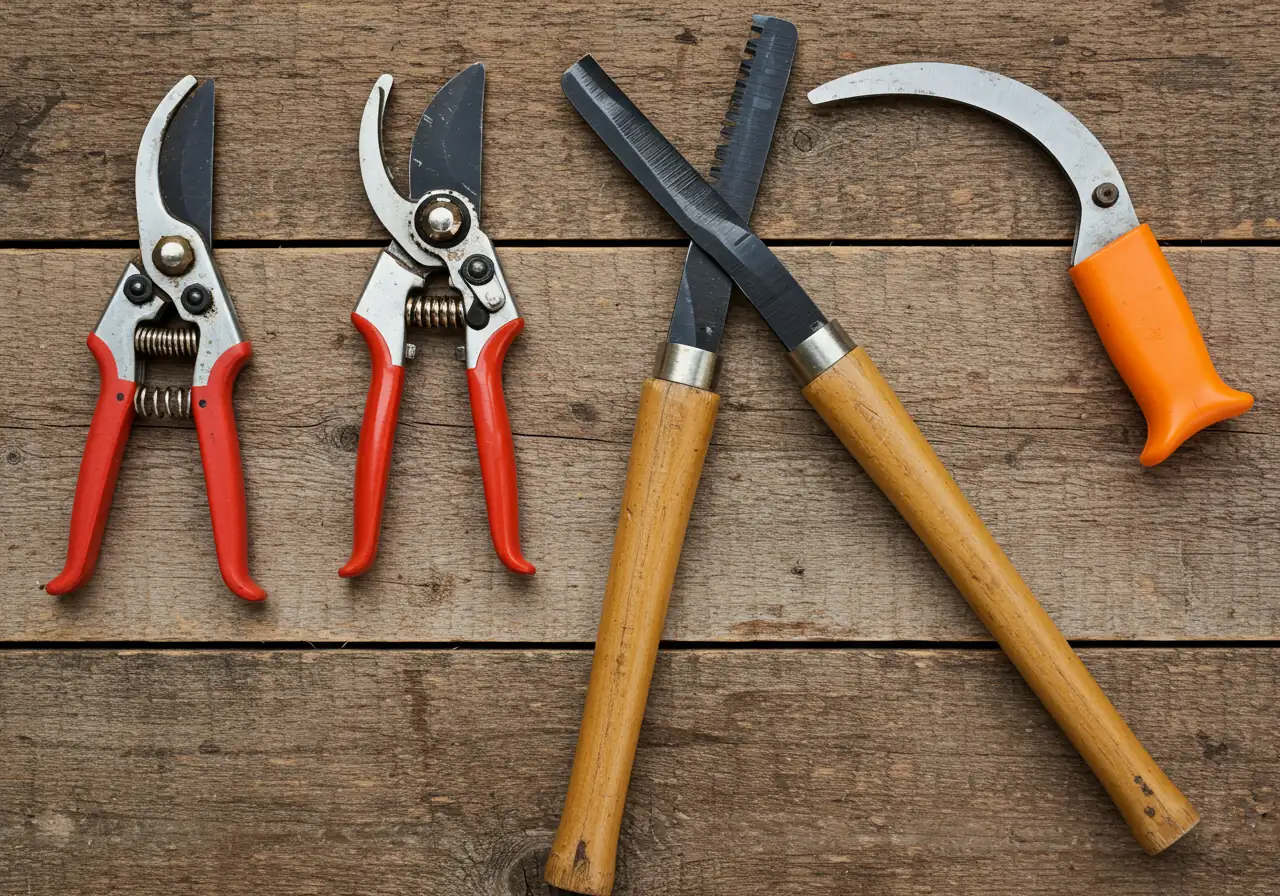
Alright, let's get down to the nitty-gritty: taming those enthusiastic plants! Controlling the size of your shrubs and perennials isn't about being mean; it's about keeping them healthy, productive, and looking sharp in your landscape design. Don't worry, you don't need to be a certified arborist to make smart cuts. With the right tools and a little know-how, you can totally handle this. Think of yourself as a garden stylist, giving your plants the perfect trim! Having well-maintained shrubs also means your lawn gets the light it needs, potentially reducing the need for major interventions like professional sod installation in Ottawa.
Your Pruning Toolkit: The Essential Trio
You don't need a shed full of gear. For most garden tasks in places like Barrhaven or right here in Ottawa, three basic tools will cover 90% of your pruning needs:
- Hand Pruners (Secateurs): Your go-to tool for stems up to about the thickness of your thumb. Bypass pruners (which cut like scissors) make cleaner cuts than anvil types (which crush one side). Keep 'em sharp and clean!
- Loppers: Basically, hand pruners with long handles. They give you more leverage for cutting thicker branches, typically up to 1.5 inches or so. Great for reaching into denser shrubs.
- Pruning Saw: For branches too thick for loppers. These saws cut on the pull stroke and make quick work of wood. A small folding saw is often perfect for garden use.
The Two Main Moves: Thinning vs. Heading Cuts
Understanding these two basic cuts is key:
- Thinning Cuts: This involves removing an entire branch or stem right back to its point of origin (another branch, the main trunk, or the ground). Why do it? To open up the plant, improve air circulation (bye-bye, diseases!), reduce overall size without changing the plant's natural shape too much, and encourage growth from the base. Think of it as decluttering the plant.
- Heading Cuts: This means shortening a branch, cutting it back to just above a healthy bud or side branch that’s pointing in the direction you want new growth to go. Why do it? To encourage bushier growth below the cut, shape the plant, or reduce its height/spread. Be careful though – too many heading cuts can lead to a thicket of weak growth at the plant's outer edges.
Let's Prune a Simple Shrub (e.g., Summer-Blooming Spirea)
Okay, deep breath, you've got this! Let’s take a common shrub like a Spirea that blooms on new wood (remember, prune these in late winter/early spring).
- Clean Up: First, remove the 3 D's: Dead, Damaged, or Diseased wood. Cut these right back to healthy tissue or their base. Use your hand pruners or loppers.
- Thin Out: Look for branches that are crossing, rubbing against each other, or growing inward towards the center. Also, remove some of the oldest, thickest stems right down to the ground. Use thinning cuts here. This rejuvenates the plant from the bottom up. Aim to remove maybe one-third of the oldest stems each year on mature shrubs.
- Shape (If Needed): If you want to reduce the overall size or tidy the shape, make some heading cuts back to outward-facing buds. Don't shear it into a meatball unless that's the specific look you want! Follow its natural form.
Tool Care and Safety First!
Seriously, folks – sharp tools are safer because they cut cleanly without needing brute force (which is when accidents happen). Clean tools prevent spreading plant diseases. Wipe blades after use, especially if you suspect disease, and give them a little oil now and then. Always wear sturdy gloves and eye protection. Flying twigs are no joke!
Dealing with the Debris
What to do with all those clippings? Don't just pile them up! Ottawa's green bin program is fantastic for yard waste (check the City of Ottawa website for details). Smaller twigs and leaves can be composted at home. If you have a chipper (or access to one), chipped branches make excellent mulch – a great way to recycle nutrients back into your garden and a key part of effective mulching and edging techniques. For larger amounts of debris, especially after a big pruning session perhaps in areas like Metcalfe, you might consider assistance from a Metcalf property cleanup service or even a general city property cleanup service to handle the disposal. Getting the debris removed is often the final step in a good pruning job, sometimes included in services like a Marionville garden clean up service.
Remember, thoughtful pruning is one of the best things you can do for your garden's health and appearance. And thinking ahead during material selection for your garden by choosing plants appropriate for the space can minimize the need for drastic pruning down the road. Go on, give it a try!
Thinking Beyond the Shears: Proactive Strategies for Plant Size Management

Okay, so we've talked about wielding the pruners like a garden ninja, mastering the cuts and timing them just right. But what if you could avoid some of those epic battles between you and your rapidly expanding shrubbery altogether? Wouldn't that be nice? Thinking ahead – being proactive instead of just reactive – can save you a lot of sweat and keep your landscape looking sharp with less constant hacking. It's like planning your route through Ottawa traffic before hitting the Queensway at rush hour!
The absolute number one strategy? Choose the right plant for the right place. Seriously, this is landscape gold. Before you fall head-over-heels for that adorable little evergreen at the garden centre, do a little detective work. Check its tag or look up its mature size. Will it actually fit comfortably in that designated spot in five, ten, or even twenty years? Or will it eventually be trying to elbow its neighbours, block your walkway, or stage a hostile takeover of your front window? Considering our local Ottawa conditions is also crucial – is your spot basking in sun all day or hiding in shade? Is the soil that typical heavy clay (hello, much of Barrhaven!) or something looser? Investing in expert soil preparation for Ottawa gardens can make a world of difference, but picking a plant that’s naturally suited to the site conditions makes life so much easier. Getting this right during the initial professional garden installation phase is key to long-term harmony. If you're planning a big project, it might even be worth getting some professional feedback on your landscaping estimate to ensure your plant choices are spot-on for size and suitability.
For perennials – those wonderful plants like Hostas, Daylilies, Peonies, and Irises that grace our gardens year after year – division is your secret weapon against overcrowding. When the clump starts looking too big for its boots, or maybe the centre looks a bit sparse and tired (usually every 3-5 years), it's time to divide! In early spring (for plants that bloom summer/fall) or early fall (for spring bloomers), carefully dig up the entire clump. Gently pull or use a clean knife/spade to cut it into smaller sections, making sure each piece has some healthy roots and shoots (or buds). Replant these divisions, and voila! You've rejuvenated the parent plant, controlled its size, improved its vigour, and scored free plants to boot! Regular division is often a core part of good seasonal comprehensive garden maintenance services, like those offered in the city. If you've inherited a perennial border that looks like a tangled free-for-all, perhaps in an older Vernon neighbourhood garden, sometimes starting with a thorough Ottawa garden clean up service is the best way to assess the situation before dividing.
Growth Management Impact (Example)
Illustrative example showing potential plant size increase (% of intended space filled) with and without active management like pruning and division.
Beyond these main strategies, there are a few other tricks gardeners can use:
- Root Pruning: This more advanced technique involves carefully cutting some roots around a tree or shrub underground to restrict its overall growth. It’s sometimes used in confined spaces but needs to be done correctly to avoid harming the plant.
- Plant Growth Regulators (PGRs): These are chemicals that can slow plant growth. While used effectively in commercial horticulture and some specific landscape situations, they aren't typically part of the average home gardening routine.
- Training Techniques: Think creatively! Techniques like espalier (training fruit trees flat against a wall), pleaching (weaving branches together), or simply guiding vines onto a trellis direct growth in specific, often space-saving ways.
Ultimately, adopting these proactive strategies means healthier, more resilient plants that are naturally the right size for their space. This translates directly into reduced maintenance (less pruning!), a more balanced and attractive landscape design, and fewer situations where things get so out of hand you need a major intervention like a full city property cleanup service. It’s about working smarter, not harder, to create a beautiful and sustainable outdoor space you can truly enjoy. Smart planning leads to less work and more time relaxing in your lovely yard!
Key Takeaway: Proactive Prevention
The easiest way to manage plant size is to choose plants that won't outgrow their space in the first place. Research mature sizes before buying! For perennials, regular division (every 3-5 years) is key to preventing overcrowding and maintaining plant vigour.
Spring Garden Size Control Timeline (Ideal Schedule)
Late Winter / Early Spring (Mar-Apr)
Prune summer/fall blooming shrubs (new wood bloomers like Potentilla, Panicle Hydrangea). Cut back ornamental grasses. Remove dead/damaged wood from most plants. Tidy up perennial foliage. Assess overall structure before leaf-out.
Mid-Spring (Apr-May)
Divide summer/fall blooming perennials if needed. Monitor growth of fast-growing shrubs. Enjoy the blooms of early spring flowers!
Late Spring / Early Summer (May-Jun)
Prune spring-blooming shrubs (old wood bloomers like Lilac, Forsythia) right *after* they finish flowering. Deadhead early perennials. Lightly shape evergreens if needed.
Throughout Growing Season
Continue deadheading flowers to encourage more blooms or prevent self-seeding. Lightly trim hedges as needed. Monitor for pests/diseases favoured by dense growth. Address issues promptly.
Quick Wins: Key Insights for Spring Size Control Success
Feeling a bit overwhelmed by the spring growth spurt in your Ottawa garden? Don't sweat it! Keeping your plants happily in check doesn't require a PhD in Botany, just a few smart moves. Think of these tips as your cheat sheet to a tidier, healthier yard this season. Here are some quick wins to set you up for success:
- Know When to Cut: Timing your pruning is crucial! Remember the golden rule: prune shrubs that bloom early in spring (like lilacs or forsythia) right after they finish flowering. For shrubs that bloom later on new growth (like many hydrangeas or potentilla), prune them in late winter or early spring before they really leaf out. Getting this wrong is like showing up late for Canada Day fireworks – you miss the big show!
- Choose Wisely from the Start: Avoid future size wars by selecting plants with a mature size that truly fits your garden spot. Doing your homework before you buy, or when planning a professional garden installation, makes long-term landscape maintenance way easier. Future you will definitely send past you a mental thank you note for this foresight!
- Use the Right Tool, Sharpened Well: Good tools make good cuts (and make the job less of a chore!). Invest in decent bypass pruners for smaller stems, loppers for thicker branches, and maybe a small pruning saw. Keep 'em sharp and clean to protect your plants from damage and disease. Proper tools and techniques are part of the professional approach you can learn more about on our about us page.
- Divide and Conquer Your Perennials: Notice your hostas, daylilies, or irises staging a takeover in the garden bed? Gently dividing these perennial clumps every few years (usually in spring or fall) keeps them vigorous, prevents overcrowding, and – bonus! – gives you free plants to share or spread around! It's a classic gardening win-win situation often included in city garden clean up services.
- Think Thinning Before Shearing: Instead of just giving your shrubs a flat-top haircut (unless that's the specific look you want!), try thinning. This means removing select older, weaker, or crossing branches right back to their base. This improves airflow, encourages healthy growth from within, and keeps a more natural, attractive shape.
- Don't Let Debris Pile Up: Pruning can create quite a mountain of clippings! Have a plan for cleanup. Your City of Ottawa green bin is great for smaller amounts. For bigger jobs, especially if you're tackling a large property perhaps out near Metcalfe, considering a Metcalf garden clean up service can save you a ton of time and hassle. If the pruning aftermath reveals the whole yard needs more attention, a comprehensive Ottawa yard cleanup service might be the perfect solution.
Stick to these tips, and you'll be mastering spring size control like a pro, keeping your landscape looking fantastic without feeling like you're constantly battling the green tide!
Your Embrun & Ottawa Pruning Questions Answered (FAQ)
Haha, we totally get it – spring flies by! For shrubs that burst into bloom early (like gorgeous lilacs or bright forsythia), they flower on *last* year's growth. The ideal time to prune them is within a few weeks *after* they finish flowering. If you wait too long, say until mid-summer, you might accidentally snip off the buds forming for next year's floral display. For shrubs that bloom later in summer on the *new* growth they put out this year (think potentilla or some spireas), you have a bit more flexibility. However, major pruning is still best done in late winter or early spring before they leaf out. Missed the perfect window? Don't panic! Light shaping or removing obviously dead or damaged wood is usually fine anytime. Just postpone the big overhaul until the plant's preferred season.
Ah, the classic Ottawa cedar hedge! They’re tough but can definitely show winter wear. The golden rule with cedars is *never cut back into old wood* – the brown, bare branches inside the hedge. Cedars generally won't sprout new green growth from that old wood. Stick to trimming the green, leafy parts. You can usually safely remove a few inches to tidy up the shape and snip off any brown, frost-damaged tips. For the healthiest hedge, try to shape it so it's slightly wider at the bottom than the top. This allows sunlight to reach the lower branches, keeping them green and full. If your hedge has significant damage or needs major reshaping, getting a professional opinion might be wise. Sometimes starting with an overall property clean up helps you see exactly what you're dealing with before you make any drastic cuts.
Take a deep breath! It's very likely *not* ruined, just potentially taking a year off from flowering. Those bigleaf hydrangeas – the ones famous for big pink or blue blooms – set their flower buds on *last year's* stems (old wood). Pruning them hard in early spring removes those buds. Whoops! The good news is the plant itself should be perfectly fine and will likely focus on producing lots of healthy leaves this year. Consider it a lesson learned for next season! In future springs, just remove any clearly dead stems. Any shaping should happen right after it finishes flowering (if it flowers – they can be temperamental in our zone!). It might not be the star of the garden *this* year, but you haven't killed it. Sometimes seeing garden recovery stories helps; take a peek at some garden transformations to see how resilient plants can be!
Ah yes, the legendary post-pruning "Branch Mountain"! You definitely have options. Smaller twigs and leafy bits can usually go in your City of Ottawa Green Bin – just check their size restrictions. For larger branches, you can often bundle them according to city specifications for curbside collection, but be sure to check the pickup schedule for your area. If you've got a *huge* amount, or just want it gone quickly, you could consider renting a wood chipper (the chips make fantastic mulch!), hauling it to an approved disposal site yourself (check for locations and potential fees), or hiring a professional service. Many landscaping companies handle debris removal, and specialized options like a Metcalf yard cleanup service are experts at making those piles vanish, leaving your yard tidy. We're also listed on Google My Business if you need local service details.
It's totally normal to feel a bit hesitant! And yes, incorrect pruning *can* potentially harm plants, though usually, it takes quite a bit to cause serious, long-term damage unless you're dealing with very old or sensitive specimens. The main risks involve pruning at the wrong time (stressing the plant or removing flower buds), making sloppy cuts that invite disease (always use sharp, clean tools!), leaving stubs that can rot, or simply removing way too much foliage at once (a general guideline for trees is not to remove more than 25-30% of the live canopy in one session). Sticking to the basics – removing dead, damaged, or diseased wood first, making clean cuts just outside the branch 'collar' (the slightly swollen area where a branch meets the trunk or a larger stem), and respecting the plant's natural shape – will serve you well for most basic *gardening* maintenance. If you're tackling a big job, dealing with valuable trees, or just feeling unsure, professional advice is never a bad idea. Feel free to contact us if you have specific concerns – we're happy to chat, and you can be assured we handle your information carefully per our privacy policy. You might also need help from an Ottawa property cleanup service for larger scale issues.
Conclusion: Take Control This Spring for a Tidy & Thriving Embrun Landscape
Wow, what a whirlwind! Spring in Embrun certainly brings the green, doesn't it? But as we've explored, that burst of energy doesn't have to lead to a backyard jungle. By understanding the secrets of pruning timing – knowing when to snip those early bloomers versus the summer stars – you can maximize flowers and keep shapes neat. We've seen how having the right tools and using smart cuts like thinning promotes better plant health and encourages balanced, healthy growth. And remember those game-changing proactive strategies? Choosing appropriately sized shrubs from the start and regularly dividing those happy perennials saves you heaps of work down the road. It’s all about smart gardening!
Taking these steps puts you firmly in control this spring. The reward? A beautiful, tidy landscape that thrives, enhancing your home and giving you more time to actually enjoy the gorgeous Ottawa Valley weather, rather than constantly battling runaway growth. It’s about creating harmony, not headache!
Feeling inspired but maybe a bit short on time or pruning confidence? No problem! If you'd prefer to leave the shears and shovels to the pros, our team is ready to help whip your yard into shape. We offer expert landscaping and cleanup services throughout Embrun, Russell, Greely, Metcalfe, and the surrounding Ottawa area including Metcalf garden clean up service and general Ottawa yard cleanup. *Reach out today* to discuss how we can transform your outdoor space!
Ready for a beautiful, manageable yard this year?
Get Your Free Estimate NowHave any tricky pruning questions still buzzing around? Or perhaps a favourite spring gardening tip you swear by? Share your thoughts in the comments below – we'd love to hear from you! (Note: Comment section functionality not implemented in this static HTML example).
